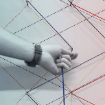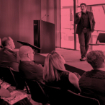Battle of the Sexes: Workplace Edition
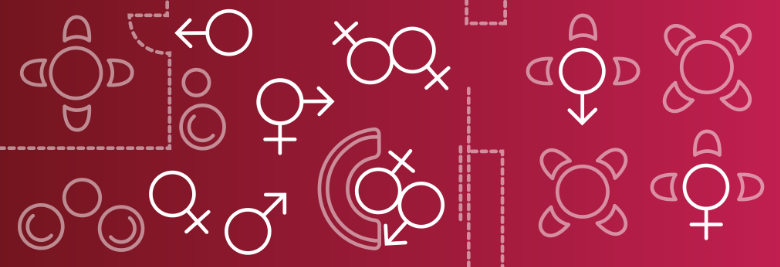
The environmental psychology behind our workplace experiences
A decade ago, members of our PLASTARC team worked with a major financial services company who wanted to switch up their retail design scheme. Out would go the smoky wood paneling, the red and blue velvet, the grand drawings of old ships or statesmen. In would come lush potted plants, soothing colors from sage to sea-foam, light-colored wood (bamboo), and framed photography of nature and regional landmarks. Why the change?
Our client had caught on to the fact that women made up a large, and growing, portion of their wealth management portfolio. Women live longer than men on average, are more often responsible for providing end of life care to their families, and comprise half the paid workforce in the U.S. "Where do these important customers want to spend time?" the company wisely asked. After extensive research, we concluded that such color, texture, and image updates appealed to their increasingly female customer base. A testament to their forethought, ;these retail spaces still look fresher than many of their competitors’.
In the same decade, major shifts in technology and the global economy have transformed the way we work. Employees can do business anywhere on their mobile devices, coworking is giving traditional office space a run for its money, and the gig or freelance economy is booming. Yet, workplace culture, along with our own physiology and psychology, have been slower to change. For better or worse, gender differences have not gone the way of the landline. That means business leaders, HR directors, facilities managers, building technology officers, and everyone else whose role directly impacts workplace experience have an opportunity to pay closer attention to how men and women experience spaces. In the On Our Minds section below, we’ll explore some surprising ways gender can affect life at work - even when everyone is behaving themselves.
On our minds
It’s now common knowledge that a well-designed workplace environment is a powerful thing. It can improve employee retention, productivity, and (our favorite) happiness. But have you considered that a thoughtfully maintained office might also help your company diversify it talent? Increase your chance at hiring female engineers? Help protect male employees cope with frustrations of hearing loss? Engage all genders to feel equally acknowledged, comfortable, and capable?
As we touched on in last month’s newsletter, men and women experience and behave in spaces differently. These stem from a variety of physiological and sociocultural roots; therefore our approaches to them can take a variety of forms. Below, we’ll discuss some of these sensory and behavioral contrasts, some ways to account for them at work, and what workplaces stand to gain by paying attention.
Disclaimer: Although we've focused our thoughts this month around common differences between men and women, the variations we discuss can apply to anyone, and the accommodations we recommend can be beneficial to every workplace. For example, independent of who is doing the interrupting or the apologizing, any meeting can be improved by offering the structure of "taking turns" rather than a "free for all," this enables our work to benefit from the full range of thoughts and ideas at the table. The big takeaway here should be about designing workplace for sensory satisfaction in an effort to enable occupants, of all persuasions and proclivities, to thrive.
(Multi)sensory inputs
Touch: temperature & tactility
Gender divide: Let’s break this one into two categories. The former likely needs no introduction: women are cold at work! Especially in summer, when the air conditioning (AC) is blasting. Why? For one thing, many office buildings rely on a decades-old "ideal temperature" formula that’s based on the average metabolism of a 154-pound man. That might have made sense in the 1960s, but now our workforce includes a lot of other body types! In addition, women’s summertime clothing tends to be lighter weight and cover less skin, than 50 years ago. Imagine wearing a skirt, sleeveless blouse, and sandals, rather than an undershirt, a long-sleeve button-down, vest, jacket, slacks, socks, and leather shoes. Brrr!
On the tactile front, women tend to have a finer sense of touch than men. (Though interestingly, this appears to be strictly a function of hand size: the smaller your fingers, the more sensitive they are!)
Workplace adaptations: The temperature component of the touch equation seems straightforward to fix: turn that AC down! But while that might work for some people in some offices, temperature—like any other sensory experience—is not a one-size-fits-all proposition. That’s why we love Comfy, the workplace app that, among other things, lets employees make requests to immediately warm or cool their space. (It also remembers individuals’ preferences and begins to automatically apply them over time.) We’re looking forward to sharing the stage with Comfy at CoreNet Global Summit 2018, next month in Singapore.
Regarding tactile concerns, PLASTARC advises making comfort a priority—especially for workplaces interested in recruiting more women. If you have a choice between hard plastic stools or cushion-topped wood benches in a cafe area, for example, think about which one will appear more inviting. Choosing natural and hand-built materials appeals to people’s sense of visual touch and keeps the office environment from seeming cold.
Sight: color and light
Gender divide: In general, women are more able to distinguish between different shades of the same basic color, and men are far more likely to exhibit some form of colorblindness. Both genders benefit from a work environment that includes some vibrantly colored spaces and some neutral ones, to provide a balance of stimulating and relaxing visual input.
Workplace adaptations: Keep in mind that color harmony is of particular import to female employees, and that colorblind employees can benefit from visual cues beyond color: words, symbols, and textures can also help convey your message. Remember in general that colors affect people’s mood and behavior. We at PLASTARC are friends and fans of environmental psychologist Dr. Sally Augustin, who’s writing on this topic is both accessible and applicable.
Taste & smell
Gender divide: Owing to a combination of hormonal differences, a greater number of cells in the olfactory bulb of the brain, and perhaps a proclivity for focusing on details, women tend to demonstrate better tasting and smelling abilities than men.
Workplace adaptations: From the lobby to the restroom, our noses are at work every moment of the day. To keep them all happy—especially the more sensitive ones—offices can employ a variety of scents to make spaces feel comforting (baked goods), fresh (citrus), or relaxing (cedar). These can be imparted via air freshener systems as well as through soaps, candles, and fresh flowers. Similarly, pleasing employees’ palates—especially those of "supertasters," who are most often women—can go a long way toward achieving a great workplace. Aim for a variety of fresh, healthy eats in customizable serving sizes that offer different textures, flavors, and nutritional content. Bonus points for mixing it up with snacks inspired by different world cuisines.
Hearing
Gender divide: Men are over five times more likely to experience hearing loss than women. While this is probably not genetic, and due instead to lifestyle factors like smoking and noise exposure, men still wind up disproportionately at risk. When it comes to hearing normally, women of all ages can hear high frequencies (above 2,000 Hz, like a bird chirping) better than men, but as they age, they are less able to hear low frequencies (1,000 to 2,000 Hz, like leaves rustling) than their male counterparts. Also, women seem particularly susceptible to stress-related sound sensitivity.
Workplace adaptations: Two of the most common difficulties experienced by people of any gender who have even moderate hearing loss are judging distance (how near or far away the source of the sound is) and distinguishing sounds (separating the sounds of the conversation you’re having from those of a conversation taking place across the room). By giving employees increased control over their soundscapes, workplaces with more open layouts can better help accommodate people of all hearing abilities. This could include providing easy access to quiet spaces for meetings and phone calls, the provision of noise-cancelling headphones, or subscriptions to personal background sound generators, like Noisli. Introducing brand-appropriate music at non-irritating levels in common spaces is another way to leverage sound to improve employee experience.
Whatever holiday(s) you are celebrating this month - Valentine's Day, Black History Month, U.S. Presidents' birthdays - take the time to consider how our built world can help engage the diversity of talents which make teams great. Strive to give all employees an equal chance to make their workplace an environment that enriches their lives and allows them to do their best work. Offer comforting accommodations like modesty panels for desks and ceiling-height stalls in restrooms. Empower employees to tailor the lighting, sounds, temperature, and scents in their space to their liking. When one of them has a question, concern, or comment, listen. All voices should be heard.
From the archives
PLASTARC just celebrated our fifth birthday! The PLASTARC team began work in mid-2012 and then incorporated in January 2013. In the past five years, we’ve had the honor of helping scores of world-class clients and their employees to create work environments that are more active, more fun, more creative, more satisfying, and more supportive—workplaces that make people happy. Thank you for inspiring us! We look forward to many more fulfilling years of making workplaces better for people.
In Case You Missed It
Recent events, current articles and things that 'caught our eye' last month:
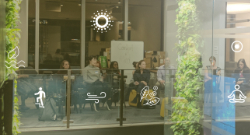
Measuring Wellness
This January 23 event at Delos' new space in NYC's Meatpacking district helped us kick of the new year with a focus on health. It also reminded us of our 2015 event of similar format. Hard to believe it's been 3 years!
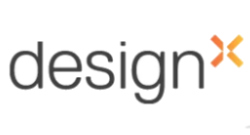
Start-ups for the Built World
We are mentoring the startup AirWorks through MIT’s designX accelerator program; highlighted in this February 12 article. We were also excited to see AirWorks pitch at the 20th annual MIT Venture Capital + Innovation Conference in Cambridge on February 9.
From Amenities to Edge Cities in Remote Office
Melissa Marsh tells "The Story Behind Coworking and The Future of Work," with a focus on what is changing most rapidly for workplace experience design.
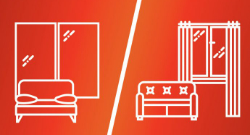
Resimercial: the Best of Home and Office Design&
Comfort at the Office? This doesn't have to be an oxymoron: Our February contribution to Work Design explains how elements of multisensory design can be employed to create attractive ‘resimercial’ experiences
Looking Ahead
Whether or not it involves a Valentine's dinner reservation, PLASTARC loves going out on the town. Events help us stay connected to our industry and friends, let us share what we know, and keep us learning more about the things we love. In the near future, you can catch us at:

CoreNet Global Summit Singapore
We’re getting ready to co-present the session "Occupant-Driven Technologies for Showcasing Workplace Performance" with our friends from Comfy at CoreNet in Singapore, March 12 - 15.



